The Pennines, Trains in the Landscape by David Hayes is a masterclass in capturing photographs of trains in both industrial settings and the desolate expanses of the Pennines.
Published in March this year, this softcover book comes in a landscape format of around 24.6 cm x 16.8 cm with 128 pages, each with a full-page colour photograph. It has a published price of £17.99 but at the time of writing it can be obtained online from Amberley Publishing at £14.39 and from Amazon for £12.19.
David Hayes’ stunning photography elevates this album from a routine selection of railway photographs into what could well be described as a small-scale coffee-table book. The composition of his photographs captures both industry and wild landscapes of the Pennines, from the limestone dales of Derbyshire to the wild moorlands of North Yorkshire, the home of the famous Settle & Carlisle line.
This is a book of landscape photography that happens to include a railway subject as part of the scene. All photographs show evidence that the photographer is a master of his art, with most being photos of locomotive-hauled freight trains taken from many imaginative angles. With a great variety of skilful compositions, the result is an album of colourful scenes that withstand critical comment.
Although the photographs are superb, they are let down by their captions. Not in respect of the descriptive detail, but in their positioning on the page, with random placements at the top left, top right, bottom left and bottom right. There is also no standard for positioning from the edge of the page, varying from 4mm to 70mm. There is also no consistency in text colour, with the random use of white and black text superimposed on the photographs, and black text in a white box.
Although the captions were detailed enough, some of the locations such as Hoghton, Lunds, and Pleasington were rather obscure and required reference to Google Maps to determine where they were. Even more detective work was required to locate Marcoff Farm, which was the location given for a Peak Forest-Selby aggregate train.
For some reason, the author has decided to name Ribblehead Viaduct by its alternative name of Batty Moss Viaduct. Although the latter name is equally valid, as it carries the line across Batty Moss, the name Ribblehead is known far and wide, whereas Batty Moss is far less familiar.
A few minor niggles include seemingly poor quality control in the printing process, as some of the pages had not been separated; no page numbers; and whereas the book’s title is The Pennines, in reality it is heavily skewed towards the Peak District, which is where half the photos in the book were taken.
On the left, the author uses a freight train to lead the eye up to the mass of Ingleborough, whilst on the right the freight train is the centre of attention.
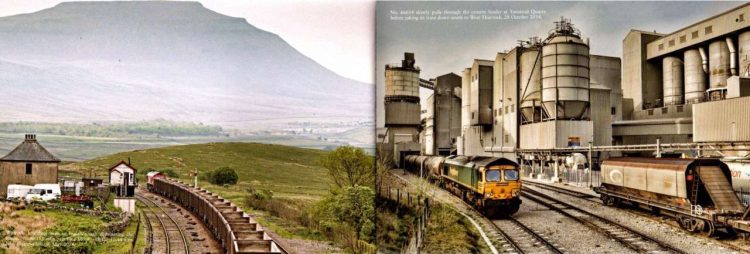
Two fine examples of composition, but spoiled by haphazard positions for the captions.
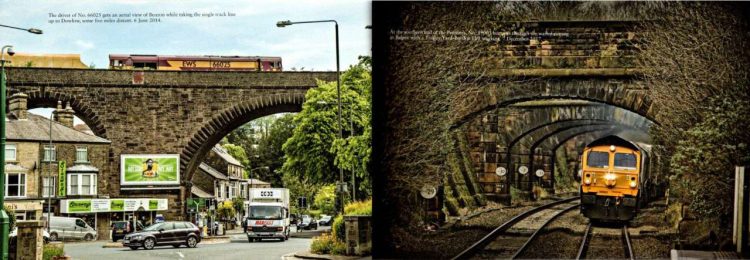
Two more fine shots that could adorn a calendar, but why is the caption on the left at bottom-right compared with the top-left of the previous page.
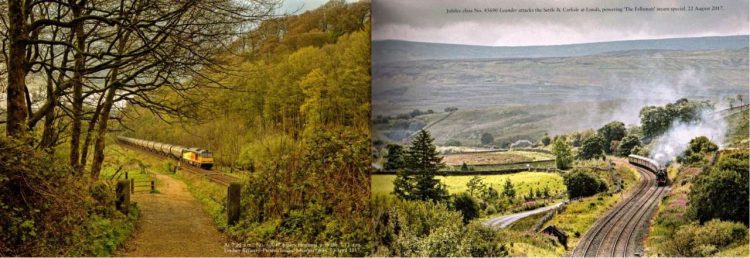
More fine examples of the author’s skill in composition, but again let down by inconsistent caption placement.
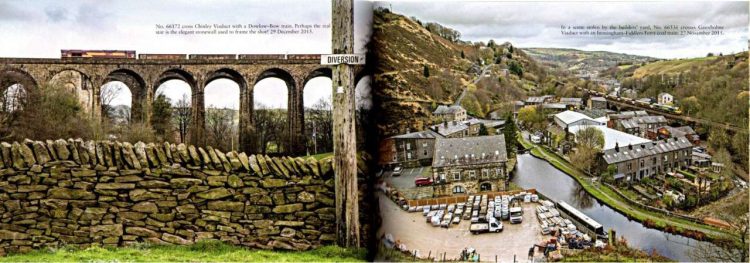
Whether it’s capturing a freight train in a narrow Yorkshire valley or a passenger train in a pastoral Derbyshire landscape, the result is equally pleasing.
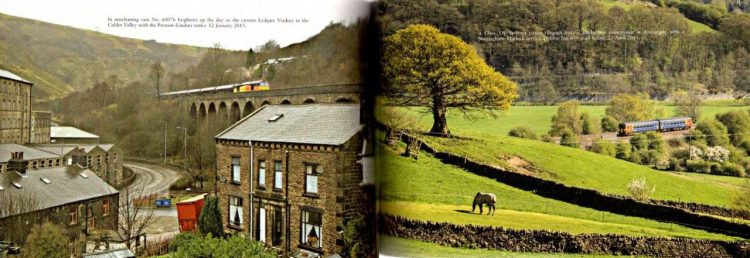
In summary, this is a really impressive offering with fantastic pictures in truly superb settings. The author’s skill at composition sets this book apart from the mundane, whilst the landscape format brings out the best in the excellent images. Unfortunately, the author’s fine efforts have been let down by apparent shortcuts at the final production stage, where the caption text is black or write at random and their positioning on the page seems to have done as an afterthought. With those shortcomings though, it is still highly recommended and great value for money.
The book is available to purchase from Amazon for around £12 as well as from Amberley Publishing.
We would like to thank Amberley Publishing for providing RailAdvent with a copy of the book for review.






Responses